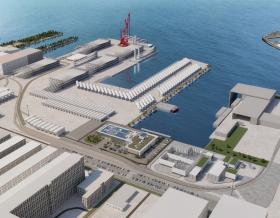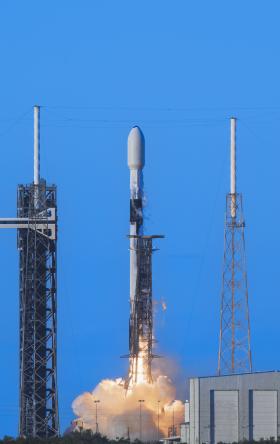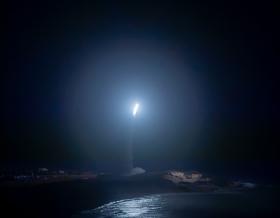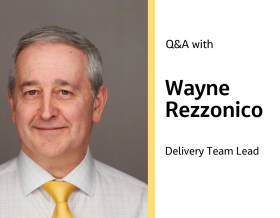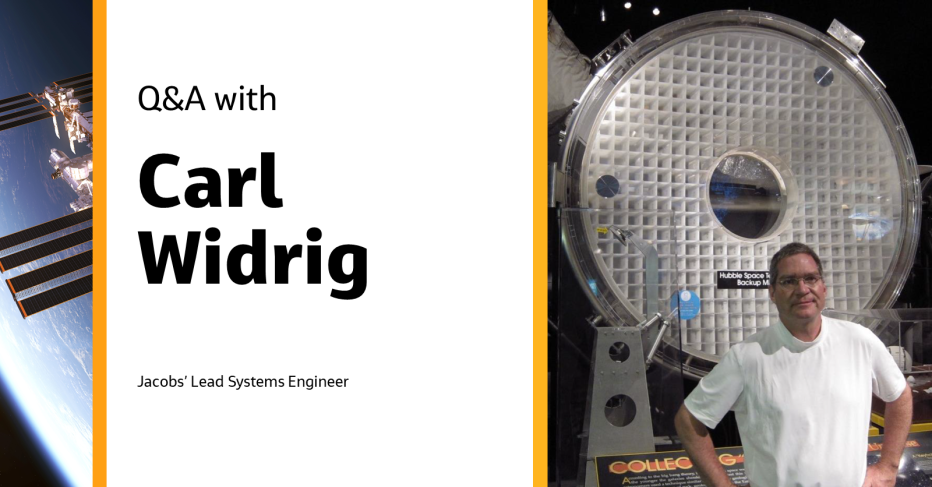
Jacobs is helping NASA’s Marshall Space Flight Center (MSFC) develop the StarBurst Multimessenger, a $20 million research project to better understand energetic events in the universe and pave the way for future generations of explorers. The newly designed satellite, which Jacobs is helping design, test, and launch into lower-earth orbit, will detect the short gamma ray bursts emitted by astrophysical objects such as neutron stars.
We connected with one of StarBurst Multimessenger’s Lead Systems Engineers Carl Widrig to discuss how Jacobs’ team of three is helping explore and understand cosmic phenomena.
Let's chat with Carl:
You’ve been with Jacobs for a few years. Tell us how you got started with the company?
I joined Jacobs in 2017 supporting the NASA IXPE space telescope, which launched from Kennedy Space Center in December 2021 to capture groundbreaking astrophysical science imagery in the x-ray band. At that time, I was a manufacturing engineer in the x-ray optics group at Marshall, leading the team that produced mirrors and mounting hardware for the space telescope.
A year ago, I got the opportunity to learn how to be a lead systems engineer for a space satellite project, which led to my role with the StarBurst Multimessenger.
In simple terms, can you tell us what the StarBurst Multimessenger Satellite does?
This satellite’s more capable wide-field gamma-ray monitor detects the prompt emission of short gamma-ray bursts emitted by neutron stars and other astrophysical objects.
The information attained through these gravitational wave detections and gamma ray observations should help us better understand the properties of some of the most energetic events in the universe.
What makes this unique from other satellites or technology?
The detectors are bigger than previous satellites, so they will capture more gamma ray events and receive more valuable data for us to study. It will also provide faster communication back to scientists on the ground who can leverage other satellites for further study (the “multimessenger” function). With this new synergy and faster communication, the satellite will be able to capture more events, more often.
Also, since the design and blueprints for the satellite is already in place, reproducing more satellites like the StarBurst Multimessenger should be easier and more cost effective.
How long will the StarBurst Multimessenger stay in low-Earth orbit?
StarBurst is intended to collect and relay data for one year. After that, the satellite will lose its ability to collect data due to the harsh environment in low-Earth orbit.
“On a personal level, the fact that I’m in a whole new world with NASA while interacting with multiple NASA specialties is really exciting. This mission is like an on-the-job training ground, and the skills that I’m learning can also be applied to other NASA missions. ”
What is Jacobs’ role in bringing this project to life?
We have a team of three helping to design, manufacture, test and launch the satellite into low-Earth orbit.
For this mission, Marshall will collaborate with partners, including the University of Alabama, Huntsville (UAH), Universities Space Research Association (USRA), the U.S. Naval Research Laboratory (NRL) in Washington D.C., and the Canadian Space Agency’s Space Flight Laboratory (SFL) in Toronto and Ottawa, Canada.
Our team is primarily filling in gaps NASA needed for this project. I have been acting as the Lead Systems Engineer on this project. We have an engineer who’s designing a box inside the center of the satellite which will house some of the electronic “brains”, and we are collaborating with our teammates to write the software code so that the electronics work with the detector hardware and send data to the ground.
We are also providing space and electromagnetic radiation expertise to help analyze and verify that the satellite is safe to be around before and during launch. We’re also verifying that the satellite and its “instrument” can withstand launch as well as the harsh space environment.
What excites you the most about this mission?
There’s a lot of astrophysical objects in outer space that emit gamma-ray radiation that go undetected. This type of satellite will be able to detect more events, more often than any other satellite in history. This mission will enable us to learn new things about sources of gamma-ray radiation in space that we currently don’t know.
On a personal level, the fact that I’m in a whole new world with NASA while interacting with multiple NASA specialties is really exciting. This mission is like an on-the-job training ground, and the skills that I’m learning can also be applied to other NASA missions.
Can you tell us about a unique or unexpected challenge the team encountered, and how they solved the problem?
The project had to come up with an alternative source of materials for possibly the most critical part of the satellite: the detectors. We originally planned to get the material from a supplier in Ukraine, but production was halted due to the war. We then found another company in the U.S. that made a similar material, though we had to reengineer it a bit for our purposes.
-
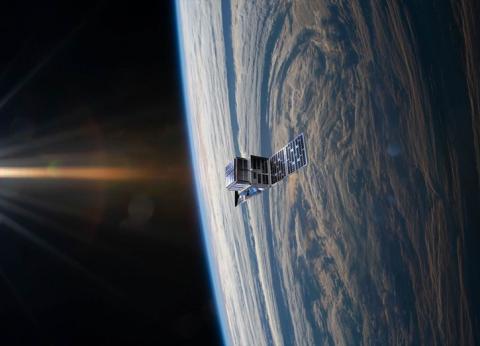
Credit: UTIAS SFL
-
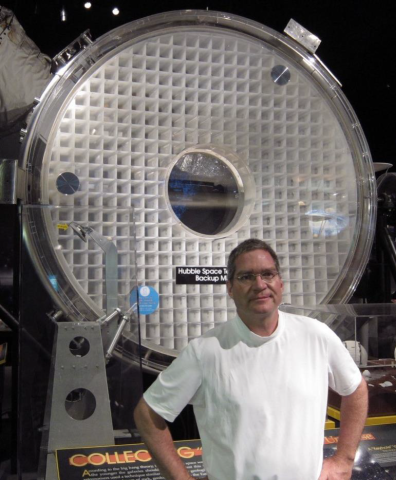
You have an interesting background. What inspired you to go into this field?
I have always been interested in NASA. When I was in fourth grade we went on a school field trip to NASA’s Ames Research Center in California. Leading the design and execution of a space satellite and being around the rockets inspires me to push the boundaries of what’s possible for my team, Jacobs and NASA.
What advice would you give to the next generation of engineers – especially those who are interested in space?
Getting your foot in the door is key. It’s also important to choose a company where you can be exposed to different fields and areas of expertise. Once you’re in, new opportunities will come. You’ll get to work with people outside your immediate group and show them you’re capable of great things. Also, if you are a college student, take advantage of internships — they are a great way to get into the field, grow your network and find where you excel.
About the interviewee
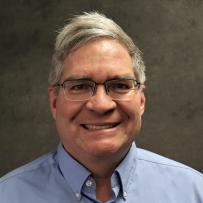
Carl Widrig has over two decades of experience in manufacturing engineering of precision hardware, which has been deployed for space-based and/or national defense missions. He specializes in large, space telescope mirrors, including most in service today for Google Earth & Bing Maps.
Join #OurJacobs team
What drives you drives us as we work to build a better world – together. At Jacobs, every day is an opportunity to make the world better, more connected, more sustainable. We’re always looking for dynamic and engaged people to join our team. Bring your passion, your ingenuity and your vision.

